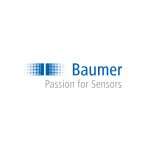How efficient Clean in Place processes save resources & maintain food safety
When it comes to phase separation during the Clean in Place process, every second counts. Controlling this process efficiently at its optimum can both maintain important food safety standards while also saving on valuable resources.
During the CIP process in food industry applications, every stage relies on important information. In this article, we speak to sensor and measurement device specialists, Baumer UK to find out the benefits of having an efficient clean in place process established for your needs.
Fast evolving process connections
Process connections within the food industry have probably evolved quicker than in any other sector. This is largely down to the ever-increasing demand placed on hygiene standards by the European Hygienic Engineering and Design Group (EHEDG). Although this organisation does not issue standards, it is responsible for recommending design principles of the equipment used within the food industry, which includes process connections, and certifies their implementation and this is well respected industry-wide.
As a result of this constant evolution, there are countless connection types available. However, these complicate the lives of plant engineers when integrating process sensors when it comes to the clean in place process for the food industry. So, how can these process sensors be integrated efficiently to provide optimum solutions? This is where we need Baumer UK’s help.
Finding correct process connections for the CIP process in food industry applications
Installing a new sensor within any process requires a lot of construction work and can, in some cases, require the complete redesign of your system. This is unnecessary and drains resources within food industry companies which can be better used elsewhere. Within the clean in place process, the measurement of filling levels, pressure, temperature, flow, and conductivity effectively and efficiently is crucial and it is required to do it in an invasive manner. So, what options are there?
Baumer UK are industry leaders when it comes to sensor and measurement technology and are renowned for providing high-precision, robust sensors for all measurement tasks, especially within the food industry. With over 40 connection variants in their portfolio, covering all types, users have the capability to choose a compatible sensor or adapter that allows fast and cost-effective installation without having to alter their system.
Phase separation without loss of media
Phase separation has been revolutionised by IO-Link as it is now possible to retain all media during this process. Allowing for both mutual and bidirectional sensor communication via its controller, IO-Link enables sensors to utilise measured values taken from other sensors to solve complex measuring tasks. Baumer is leading the way with this approach with their CombiLyz AFI sensor.
This conductivity sensor reduces or circumvents the response time of temperature compensation through the transmission of the measured temperature value. This enables faster media detection during phase separation, saving on key resources, such as thousands of litres of water and cleaning media annually in the clean in place process.
Benefits of using IO-Link for process sensors
IO-link can be used to access valuable additional information that is already generated during the process of the measured values in the sensor. This enables precise measurement for a variety of different values that can significantly improve your clean in place process.
Some of the key advantages of using IO-Link for process sensors include the following:
- Cost-effective & securely connected
- Extended settings
- Additional data
- Increased flexibility
- Fast sensor exchange
- Simple and safe operation.
Baumer integrates IO-Link connectivity across many of their sensors including inductive sensors, ultrasonic sensors, light sensors, optical distance sensors, flow sensors, pressure sensors, level switches, and conductivity sensors.
To learn more about these digital process sensors and saving resources in clean in place processes contact Baumer UK today. You can also learn more about Baumer’s portfolio for process connections through their process connections whitepaper.
Get the latest process industry news
Interested in receiving even more industry-leading news from Process Industry Forum delivered directly to your inbox? Then sign up to our free newsletter. Bringing you the latest news, trends, innovations and opinion from across the process industry, our exclusive newsletter gives you all the industry insights of the moment in one, easy-to-digest bulletin. Stay ahead of the competition with regular process industry news instalments from PIF.

